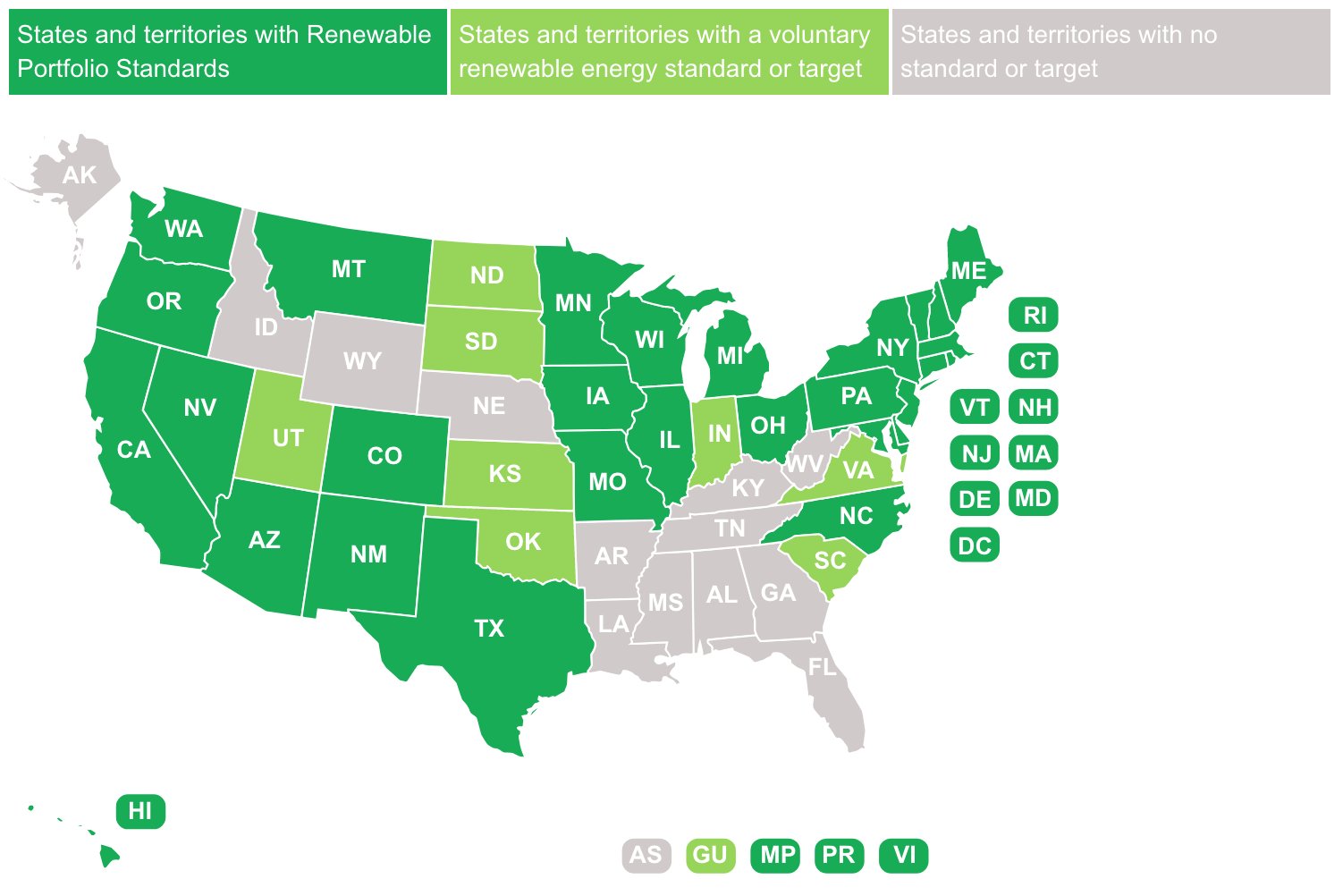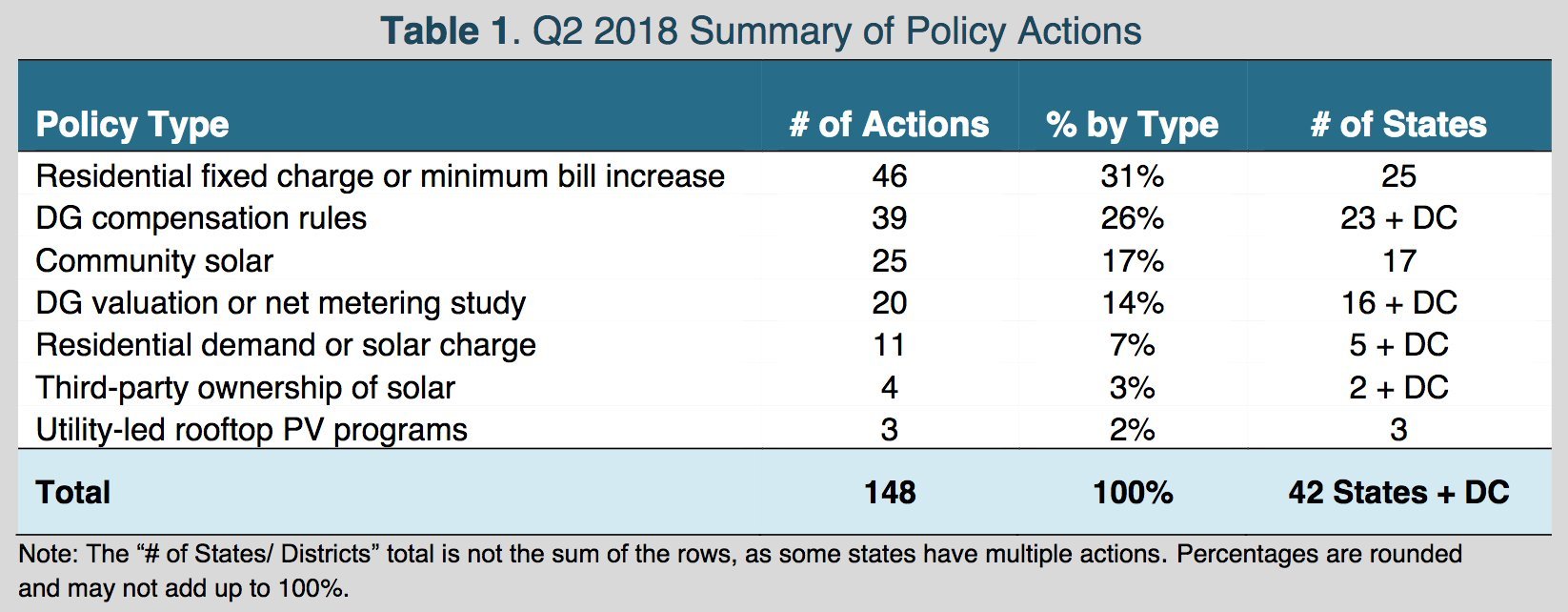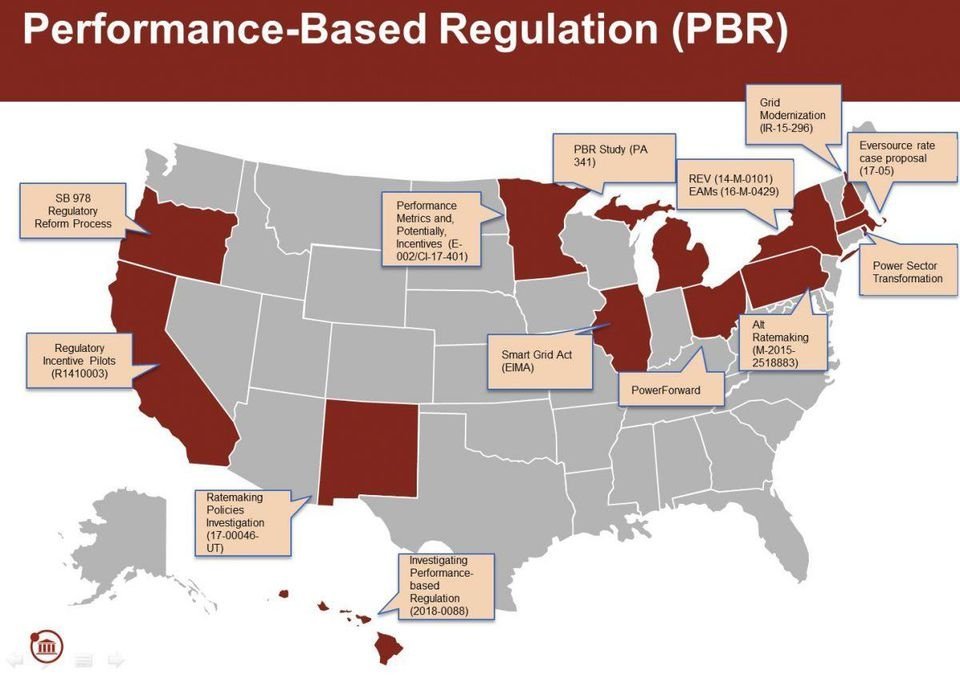I initially launched this column for selfish reasons — to help keep myself up to date on the many state clean energy policy developments in the U.S. Since we launched State Bulletin three years ago, I hope this column has done the same for you.
In that time the state policy landscape has changed quite a bit. It’s arguably become even more complex as an increasing number of states have started to grapple with how to reform utility business models and embrace clean energy resources.
In fact, there are now so many policy updates it’s difficult to cover them effectively in a single column. For that reason, GTM will focus on covering the latest and most significant clean energy policy news on our public news site, while I shift my attention in Squared to the world of electrified transportation. I’ll be covering everything from electric trucks to EV charging networks to Tesla and, yes, a healthy dose of EV related policy.
So I hope you will join me as I embark down Electric Avenue! You can read my first column in the new series here. For now, to send off State Bulletin, I leave you with some of the most important state policy topics and trends to watch as the clean energy transition continues to accelerate.
The future of RPS targets
Renewable portfolio standards have been one of the most important drivers of clean energy growth in the U.S. RPS targets require utilities to ensure that a specified amount of the electricity they sell comes from renewable resources. According to Lawrence Berkeley National Laboratory, roughly half of the growth in U.S. renewable energy generation since the year 2000 can be attributed to state renewable energy requirements.
Today, RPS targets exist in 29 states. But half of them reach their final year by 2021, which is coming up quickly. The question now facing lawmakers, as a Huffington Post article recently posed is: now what? Does renewable energy still need a leg up from government? Or has the technology become economically viable enough for utilities and other energy buyers to embrace renewables based on market drivers alone?

Source: National Conference of State Legislatures
California has decided to go the policy route in passing a historic 100 percent clean electricity bill this year. Lawmakers in New Jersey and Massachusetts also voted recently to raise their state’s RPS targets. Hawaii passed a 100 percent renewable energy mandate a couple of years ago and is now figuring out the best way to meet that goal.
State legislatures aren’t the only way to boost renewable energy targets, though. This fall, voters will decide whether or not Arizona and Nevada should increase their respective RPS targets to 50 percent by 2030. At present, both ballot measures look positioned to pass, but nothing is assured until voting day.
As I wrote recently for this column, Arizona’s Proposition 127 faces strong opposition from the state’s largest utility, Arizona Public Service. Commissioner Andrew Tobin recently issued a press release formally voicing his disapproval of the measure, which has triggered charges that he may be improperly influencing the election.
While he’s opposed to Proposition 127, Commissioner Tobin has proposed to increase the state’s RPS to 80 percent by 2050 and expand it to include nuclear power — something Arizona Public Service says is critical to reducing emissions in the state.
The rise of these broader “clean energy standards” as replacements for renewable energy standards is another trend to watch in this space. A recent report by Third Way Energy and The Breakthrough Institute, which I wrote about for State Bulletin, makes the case for why states should adopt a portfolio standard for a broader set of resources (and nuclear power in particular).
Then there are the states focusing on free markets, like Texas, which reached its mandated renewable energy target for 2025 in 2009, and has never extended it since. Today, Texas produces the most renewable energy of any state in the U.S. thanks in large part to the design of its electricity market.
Will other states choose to boost their renewable energy goals, like California? Or leave it up to the market, like Texas? This outcome will have a meaningful impact on the U.S. renewable energy industry, especially because market structures and the mix of other energy policies vary greatly from state to state, which may put renewables at a disadvantage.
Policymakers in several states have introduced legislation in recent years to repeal or freeze their RPS targets, claiming they’re too expensive. But so far only two (Kansas and Ohio) have been successful.
Distributed solar
Many words have been typed over the distributed solar policy drama. And I say drama, because it really does fit the definition of “a state, situation, or series of events involving interesting or intense conflict of forces,” as per Merriam-Webster.
The rise of distributed solar cuts to the core of the utility business model debate and directly affects the bottom line of many solar companies, and, consequently, their employees. Net metering is a key policy to watch in this space, but it’s hardly the only one. As outlined in my State Bulletin summer policy roundup, distributed solar is also affected by residential fixed charges, demand charges, third-party solar ownership rules, utility-led rooftop PV programs and more.

Net metering helped to launch the U.S. rooftop solar market, but as solar penetration grows, policymakers are revisiting the concept. In some states (like Hawaii and California), the policy change was necessary to maintain grid reliability, while in others (like Maine) the change may have overcorrected or been premature.
These changes have major implications for the solar industry. The rooftop market boomed in South Carolina after net metering was introduced in 2014. Then as the state approached (and ultimately hit) its net metering cap this year, rooftop solar companies warned that ending the policy would cause job losses. Duke Energy ultimately agreed to continue offering solar incentives, but only until midway through next year's legislative session.
These policy changes come as distributed solar companies seek to return to growth. In the third quarter of 2018, the residential PV sector was essentially flat on both a year-over-year and quarter-over-quarter basis — which was actually an encouraging sign after a year in which the market contracted 16 percent.
The evolution of distributed solar policy is a hot topic to watch as part of the broader clean energy transition, and we will continue to cover the latest news on GTM’s public site.
Next-gen regulatory reform
Regulatory dockets are complex places, but they represent the front lines of electricity sector transformation.
Several states have launched major grid modernization proceedings, such as New York’s Reforming the Energy Vision, Ohio’s PowerForward initiative, and Oregon’s regulatory reform proceeding, among others.
There are a number of major topics under discussion within these proceedings, from setting affordable rates, to reliability planning, to grid edge tech rollouts.
My colleague Jeff St. John continues to cover these modernization proceedings in depth in his column Dispatches From the Grid Edge. I’ll leave you here with just a couple of big policy trends to watch for.
First: grid riders. These are bill add-ons utilities often seek to pay for large grid modernization investments. Utilities say riders help them adapt to a changing technology landscape, while opponents say riders can be used to mask “gold-plating,” or grid investments that go beyond what the system needs, as a way to boost utilities’ return on capital expenditures.
Second: performance-based regulation. With this growing trend, utility regulators are seeking to create incentives and penalties that link electric utility revenues to the utility’s success at hitting various customer-focused performance metrics. As of May, 13 states were discussing or moving forward with performance-based regulation.

EVs — of course!
Electric vehicles represent one of the most significant new growth opportunities for U.S. power companies. Not only do EVs add load to the system, which means utilities get to sell more electrons, they can help manage surplus availability of renewable energy and create deeper ties between utilities and their customers, opening up a pathway for offering other products and services.
Several utilities are starting to take a more active role in this space. But as of today, most utilities are woefully unprepared for the rise of EVs, according to industry insiders. A report released by the Smart Electric Power Alliance earlier this year found that among 486 American utilities surveyed, 74 percent are still in the early stages of planning for EV growth.
As I recently wrote in Part 2 of a three-part State Bulletin series, utilities and their regulators are grappling with questions like: What roles should utilities versus competitive providers play in accelerating deployment of EV infrastructure? What types of utility infrastructure will be needed to serve EV users, who should pay for it, and how will utilities recover their fixed costs? What incentives should EV customers face to encourage right-time charging and discharging?
Then there are detailed policy discussions being held around the rate structures needed to manage EVs in a way that benefits, or at least doesn’t harm, the electric grid (which I addressed in Part 3). At the same time, cities and states are taking steps, outside of the regulatory process, to boost EV adoption (Part 1). I’ll continue to cover these policy trends (and much more!) as part of my new column.
Rock on to Electric Avenue
There’s a lot more out there to explore in the realm of clean energy policy, from community solar to efficiency measures and beyond — and we will continue to cover all of the above in various ways, both on GTM Squared and at www.greentechmedia.com.
For an even more granular look at the wind, solar, storage and grid edge market segments, check out the latest research from Wood Mackenzie Power & Renewables.
Next week, I hope you’ll join me as we rock on to (or quietly accelerate emissions-free down) Electric Avenue.